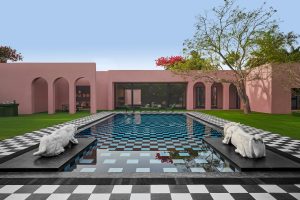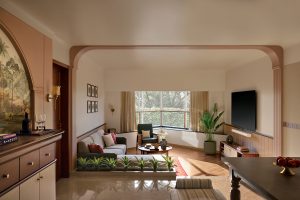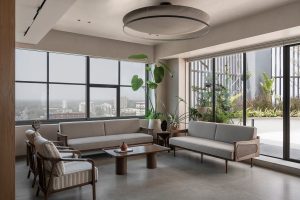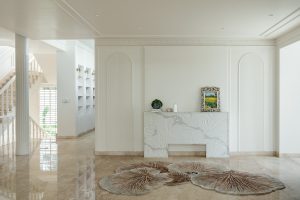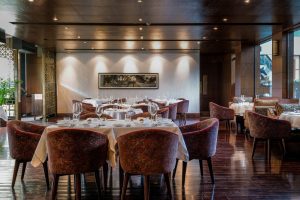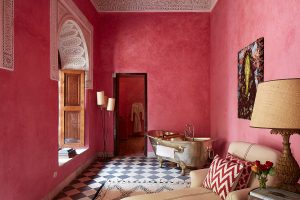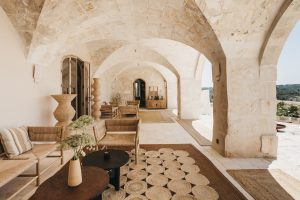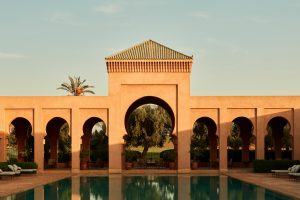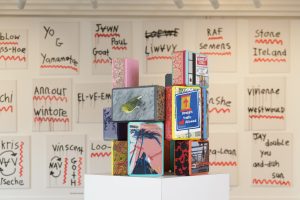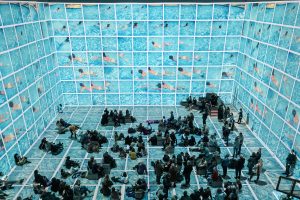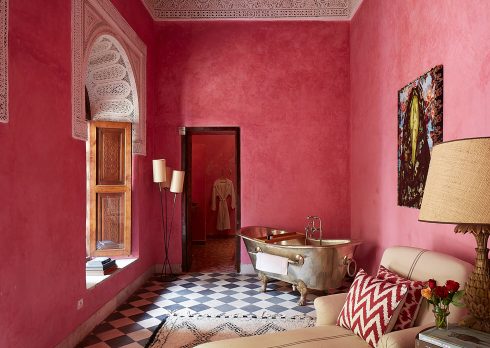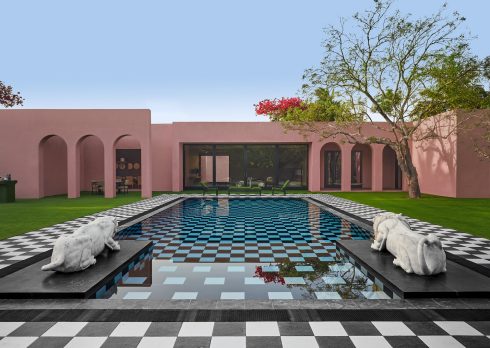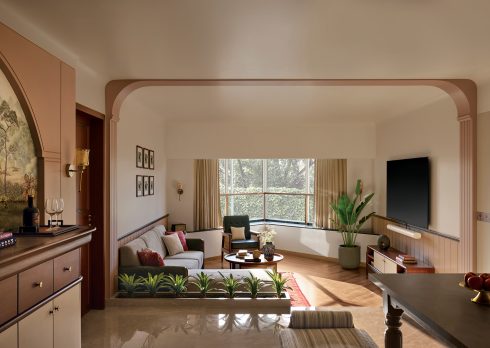RAAS Chhatrasagar In Rajasthan Redefines What It Means To Be A Sustainable Luxury Hotel
The premise behind RAAS Chhatrasagar is a simple one; to stand out from the crowd by blending in with the environment. This boutique tented hotel in Nimaj reinterprets the historical, and weaves into its design the spectacular biodiversity of Rajasthan. RAAS Chhatrasagar is the latest addition to RAAS Hotels, a Rajasthan-based boutique hospitality group that contemporizes the royal Rajput ethos while aligning with the tenets of conscious tourism. The sixteen-room retreat sits on a check dam nearly a hundred and fifty years old and overlooks Chhatrasagar – an artificial lake created in the late nineteenth century by a local Rajput noble.
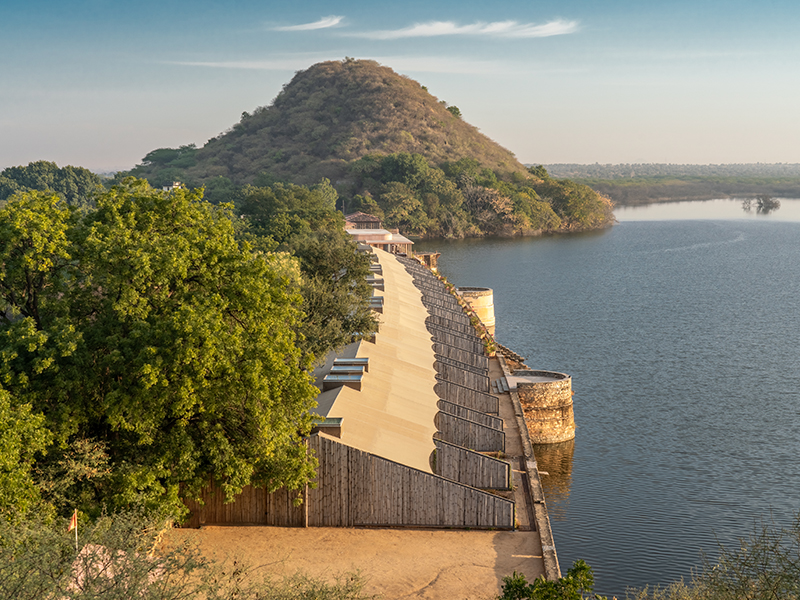
RAAS Chhatrasagar is a compelling reinvention of an existing property that was run by the noble’s grandsons; a tourist camp which comprised eleven tents and was operational only from October to March. While these tents exhibited a charming rusticity, they came with a host of disadvantages that included an absence of insulation, no visual or acoustic privacy, and a lack of structural permanence that required the tents to be dismantled during the severe summers only to be reassembled at the onset of autumn. And so, in order to best enhance the tourist experience while retaining the authenticity of the space, RAAS came on board in 2019 and brought about a complete overhaul of the property.
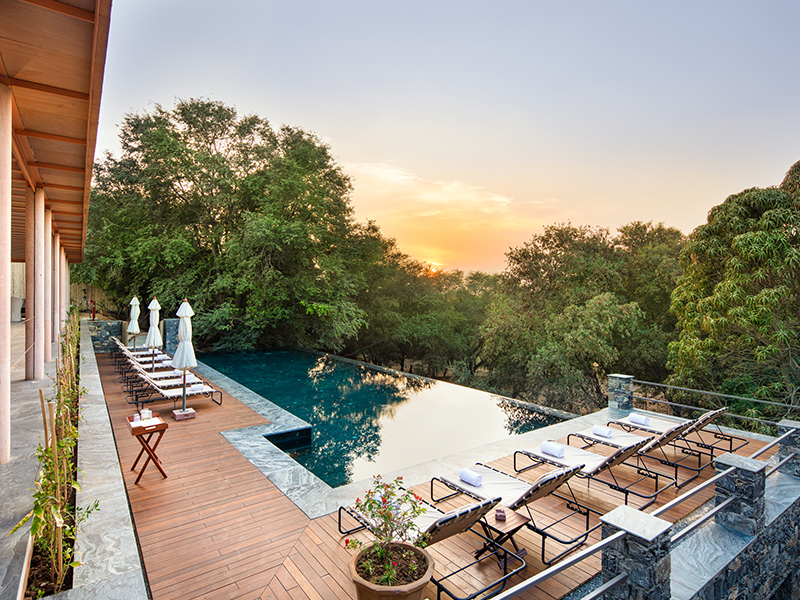
The hotel currently stands as one of the newer Indian properties that align with the tenets of luxury eco tourism, which is on a slow but steady incline in the country. With both Indian and international travellers growing more mindful of their carbon footprint, the landscape of hospitality design is shifting to cater to this demographic. “For travellers, the last year has been a real wake up call. They want to make sure their travel money is being put to good use,” says Nikhilendra Singh, MD and Founder of RAAS Hotels. A significant portion of Chhatrasagar’s 1,500 acres was once used for agriculture. In 2003, however, the owners along with local farmers gave up the practice and made way for a gradual reforestation. By the time RAAS Hotels came into the picture in 2019, the land had mushroomed into a vast stretch of forest with indigenous species of trees, with a small patch reserved for organic farming. Animals like Nilgais (Asian antelopes), wild boars, jackals, foxes, mongooses, and porcupines are commonly found in the reserve, along with over 250 species of birds.
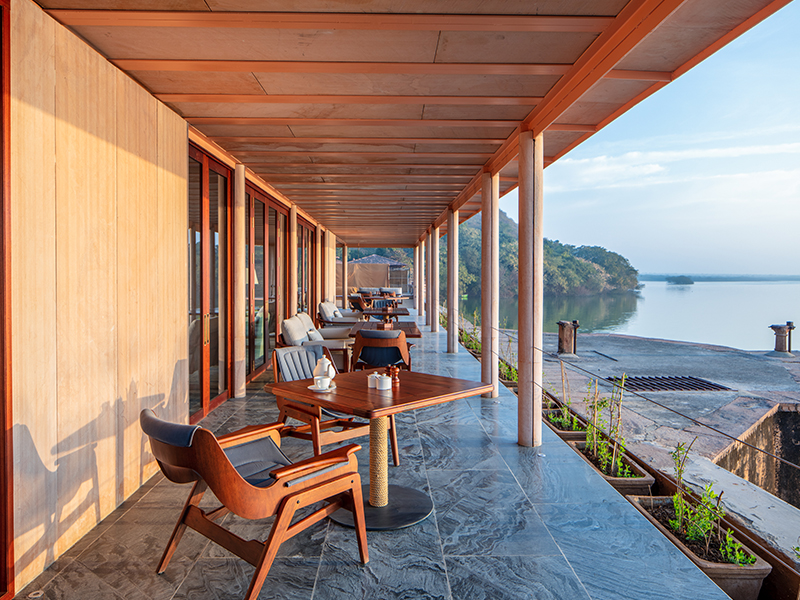
The property itself has been designed by Studio Lotus, a Delhi-based architectural firm, helmed by Ambrish Arora. Their primary guidelines for the hotel looked at addressing the problems faced by the original tourist camp; creating a perennial property resilient to the harsh summers and cold winters of the region and augmenting the public spaces with a richer amenity mix, all while ensuring a minimal carbon footprint. Through a system of low-impact foundations and lightweight superstructures, all while adopting a dry construction methodology, the team at Studio Lotus was able to do just that.
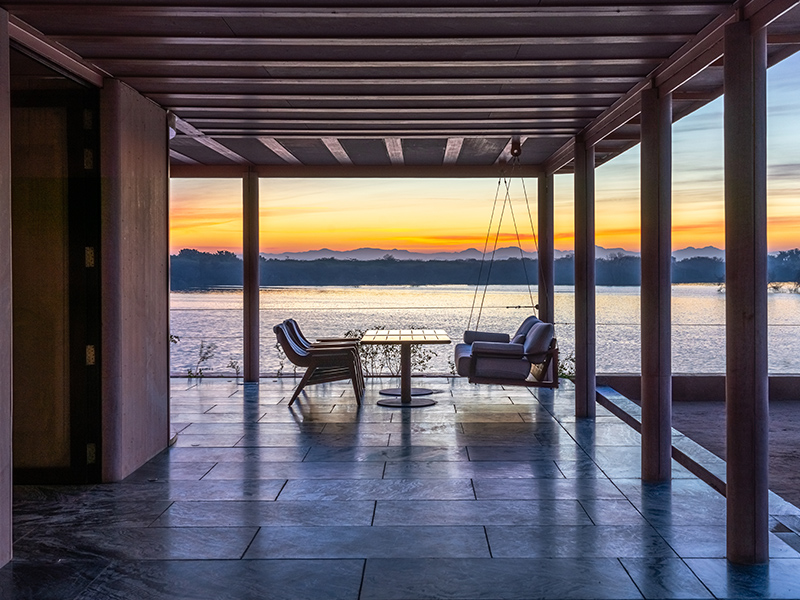
“The site presented us with an opportunity to create an architectural form which emerges from the morphology of the dam without conforming to the cliché of the Rajasthani tents,” Arora tells us. “A lot of thought went into minimisation of the air conditioning footprint of the property and creating a large number of shaded and naturally ventilated areas thereby framing the outdoor experiences along both edges of the pods with shaded decks for outdoor lounging.” The layout of the hotel is linear and comprises a pod-like arrangement of conjoined suites raised on stilts. Given its remarkable location, the design consciously accounted for outdoor experiences on either ends of the pods; sunrises over the lake and sunsets into the forest serve as a part of the guest experience and each pod hosts spill-outs for outdoor lounging.
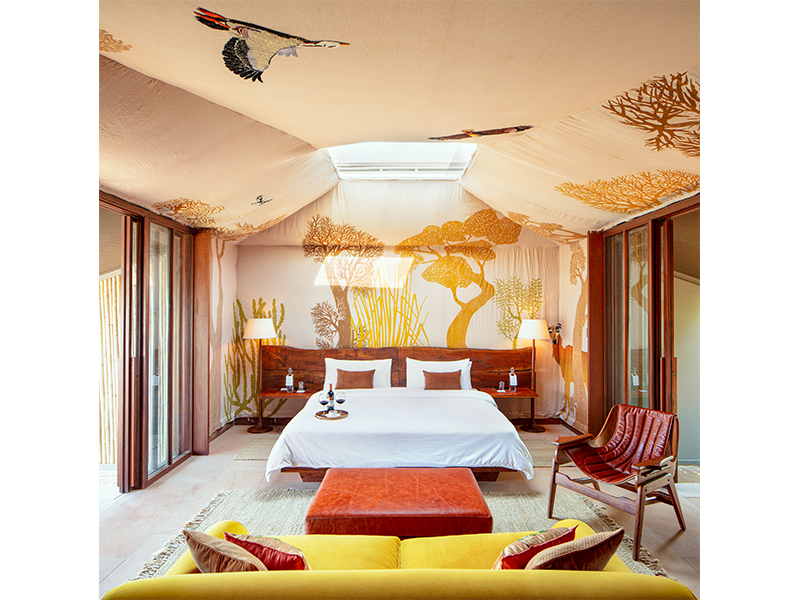
On the inside, every pod is an experience in itself. Fabric lined to complement the overall tent experience, the interior surfaces double up as unique canvases that delineate the rich wildlife of Chhatrasagar. Printmaker Dhvani Behl’s studio Flora For Fauna worked in close collaboration with Studio Lotus and the RAAS team on developing the textiles that made up the walls. Woodblock, screen and digital prints, as well as intricate hand-embroideries took the shape of indigenous plant and animal life from babul trees to vibrant flamingoes!
One of the most compelling features of each room is a retractable skylight installed into a ceiling structure, that not only makes for breathtaking views but also further fortifies the immersive experience that RAAS Chhatrasagar promises. Every pod features a bedroom with an attached study, and an en-suite bathroom with a walk-in wardrobe. Bespoke teak furniture by Mangrove, a furniture company co-founded by Ambrish Arora, has been used all across the project. “For us, the defining aspect of this project is the manner in which it has been planned; which allows guests to be totally connected to the unique environs while being totally private and ensconced in restrained, handcrafted luxury,” says Arora. “The porous and permeable envelope of the tents, the expression of flora and fauna through woodcut and hand-embroidery, and the skylights with retractable blinds elevate guests’ connection with the surroundings while simultaneously providing the opportunity to secure themselves from inclement weather conditions.”

A modern representation of the Rajputana twelve-pillared pavilion, the Baradari is the structure that houses the restaurant at RAAS Chhatrasagar, while connecting the two primary experiences offered by the retreat – the panoramic views of the lake, and the serenity of the forest belt. The naturally-ventilated wraparound verandah extends up to the embankment walls on one side and steps down onto the deck lining the private, all-season infinity pool on the other. Featuring an unrestrained material palette comprising hand dressed local Chitar stone, the Baradari evokes a sense of subtle luxury. Taking cues from Dhvani Behl’s woodblock printed patterns, stone panels chiselled by hand illustrate the landscape and wildlife of the region. Country-style furniture crafted out of locally-sourced Acacia (kikar) wood further fortifies the Rajasthani experience, and even the bar counter sports intricate hand carved relief work that depicts a flock of flamingos.
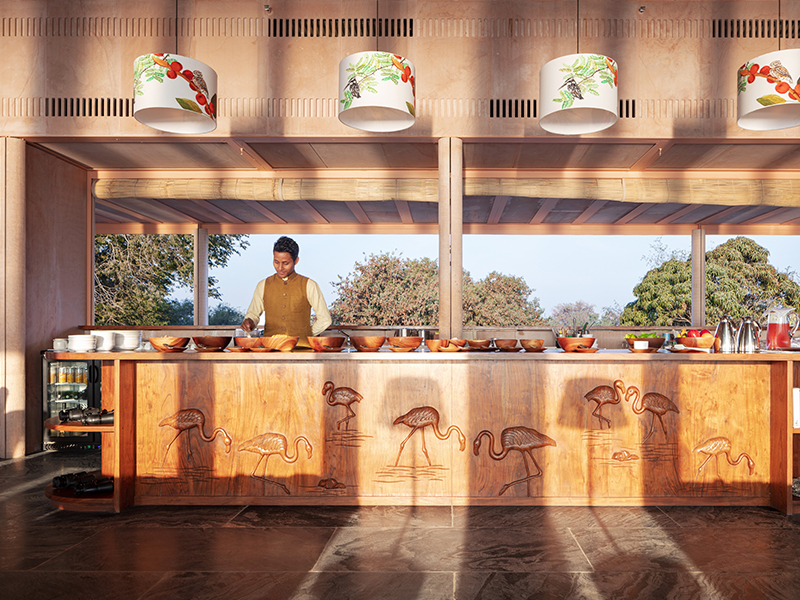
Ultimately, RAAS Chhatrasagar is an archetype of sustainable luxury in a holistic sense. While India’s luxury ecotourism industry has a long way to go, properties like RAAS certainly serve as blueprints for designers and developers. “Hotel owners need to understand that being environmentally friendly and sustainable makes good business sense,” says Singh. “Also, while being environmentally friendly is important – travellers also care about positive impacts on local communities. So do hotels hire local staff? Do they help the communities they operate in? This is equally important. In the long term, they need to focus on sustainability as a key pillar versus a trend or PR/CSR story,” he says.
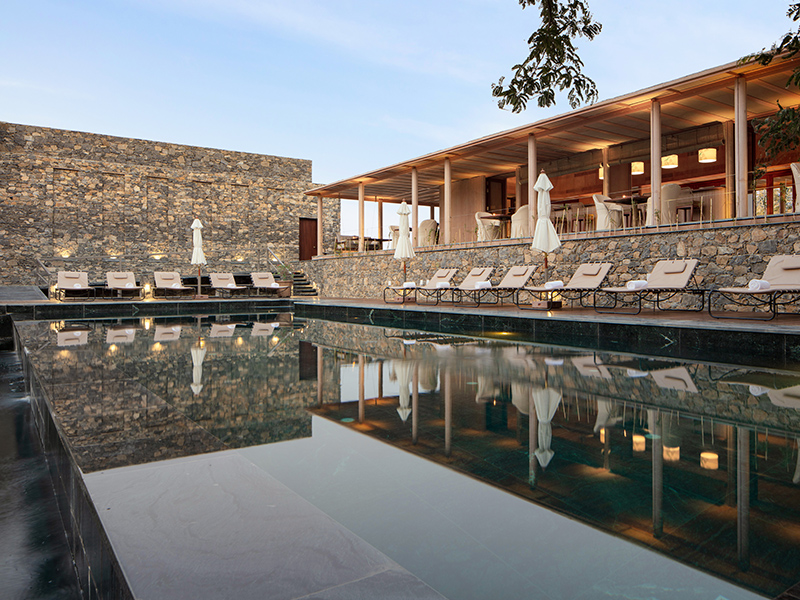
Arora, too, had a similar take on the matter. According to him, sustainability along with great design would make the hospitality proposition a more compelling one, and hopefully enable hotel owners to take it upon themselves to deliver luxury while minimising waste, lowering embodied and operational energy, reducing packaging, saving energy and water, and increasing the localisation of material and skill (most of which brands such as RAAS already exemplify). “They will begin to realise that it could save considerable costs in the medium to long term, and is not just a responsible but also a financially attractive way of conducting business,” he says. “Thereafter, most communication could be streamlined towards building consciousness amongst potential travellers in the luxury market and making them feel good about spending their money in properties that are a lot more responsible to their context, environmentally, socially and culturally.”

